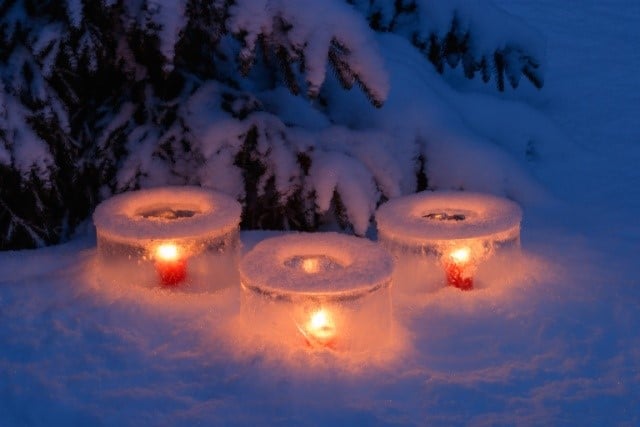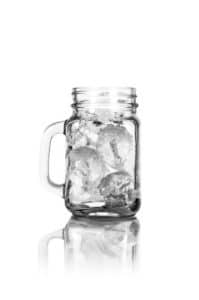
Activities, Advice, Family Fun, teenagers |
Think back to when your middle or high schooler was a young child. Remember how they were little busy bodies, just bursting with energy? Those days were long and exhausting but you never had to worry if they were getting enough exercise because they never stopped moving, bopping from one activity to the next.
Now that they’ve reached their teenage years, their days of early rising are a thing of the past and their daily activity level has probably dwindled down. Adolescents tend to turn their attention off of physical activities like sports and dance and onto things like part-time jobs, friends, their devices, and their studies. They have a lot to juggle at this age and often times their fitness falls to the wayside.
It’s been shown that people who have led an active life starting at a young age tend to be active and healthy throughout their adult life. We all know that the benefits of an active lifestyle are plentiful. Not only will exercise help your teen to maintain a healthy weight, but people who exercise tend to have better outlooks on life, better overall health, and those who partake in sports have higher self-confidence. Let’s take a look at how you can encourage your teen to add fitness into their daily schedule and get them back on track.
Medical professionals recommend that teens get one hour or more of physical activity each day. Encourage your teen to incorporate some form of activity each day whether it is skateboarding, bicycling, yoga, swimming, sledding, snowshoeing, football, baseball, karate, etc. The list of exercise possibilities is endless.
Even everyday activities present exercise opportunities. Remember, chores burn calories (plus it frees your day up when the whole family helps with household chores). Need something from the convenience store at the corner? Have your teen walk there instead of driving. Is your teen looking for a part time job? Suggest they try babysitting. Watching kids is a sure way to burn calories because they keep you on your feet!

Some form of screen time is being had at most moments of the day, especially when your teen is a virtual learner. It’s no surprise it’s hard for teens to find time to exercise when upwards of eight or more hours each day are spent in front of the screen. This includes watching TV, completing their schooling, browsing online, and playing video games.
Sit down with your teen and discuss how you would like them to find time to add one hour of physical activity into each day. Let them have control on how they want to add it in. They may agree to wake up earlier and get it out of the way first thing. They may wish to break up their school day and clear their mind just before lunch. Or, they may find they like to exercise prior to bed. Anytime is fine as long as they agree to get it in.
Like most things, once you get rolling, the momentum builds and it’s easy to keep going. Exercise reduces stress, increases energy, and gives an overall feeling of good health. Once your teen starts adding daily exercise into their routine, they’ll love the feeling and want to keep going.
Just like when your kids were younger, try to encourage your teen to find activities that they find fun. When someone has fun, they are more apt to keep going. Suggest that they try to have a friend join them in their choice of exercise. They may find it more fun if they have an exercise partner to keep them on track and motivated. Plus, it gives them another opportunity to hang with their friends and what teen doesn’t want that?
A great way to get your teen interested in exercise is to make it a family affair! Every member of the family will benefit from becoming more physically active. Join a local gym that offers something for everyone and go as a family every night. Becoming a healthier family will be good for everyone and you can help each other stay on track with your physical fitness goals. Be a positive role model for your teen by leading by example. After all, they look to you for guidance and follow in your footsteps.
Make sure that your teens don’t try to run a marathon their first time on the treadmill. If they have led a sedentary lifestyle, they will need to start off slow then build up their momentum. Trying to tackle too much at once will result in injuries and can be discouraging in the long run.
Talk to a doctor if you are concerned about your child not getting enough fitness or if they are at an unhealthy weight. They will be able to give you additional pointers and make sure that your teen is adding in a fitness activity that will best suit them.
Should your child have a medical condition that makes you concerned about them adding in exercise, bring this to your doctor’s attention also. Often times, there are still ways they can stay physically fit but it may take some modifications or shorter time intervals. Their doctors will be able to advise you properly.
Is there a type of activity that your teen enjoys doing? What activities do you do as a family to keep your family fit and active? Leave a comment down below and let us know! For more on how to get your teen motivated physically and mentally, visit our Facebook page.

Activities, Creative Learning, Family Fun, history, Just For Fun |
There’s nothing that can make you feel more like a Michigander in summer than feeling the breeze off of the Great Lakes, smelling fudge in the air, and hearing the clip-clopping of horses as you stroll through Mackinac Island.
For a lot of Michigan natives (and others, too!), summer isn’t complete without a trip to Mackinac Island. It’s a place of total relaxation. After all, you can’t engage in the hustle and bustle of city life when there are no cars allowed on the Island and you’re transported back to a historical time. Mackinac Island manages to have the perfect mix of history, nature, attractions, amenities, and old-time fun packed into an area that’s less than 4 square miles. It’s a true Michigan gem.
Here are some things to keep in mind when planning a family trip to Mackinac Island this summer:
Ferry Fun
Since cars are not allowed on the Island, you’ll have to park them on the mainland and board the ferry. You can catch a ferry from either Mackinaw City (Lower Peninsula) or St. Ignace (Upper Peninsula). Choose from Shepler’s Ferry, or Star Line Ferry for service to and from the Island. All the fares are comparable but keep your eyes peeled for coupons. Enjoy the 30-minute ride inside the lower deck or sit and enjoy the cool breeze and freshwater mist on the open-air deck. Regardless of where you sit, make sure to take in the spectacular view of the 5-mile long Mackinac Bridge. If you have overnight accommodations, your hotel may offer horse-drawn shuttle service to the hotel or luggage service, so be sure to ask when booking your reservation.

Accommodations
When looking for overnight accommodations on Mackinac Island, you will notice one thing: there are no chain hotels. You can stay anywhere from a quaint bed-and-breakfast to a full service resort. Some resorts have golf courses and other attractions. Others offer bike rentals and pools. Be sure to ask questions when booking your reservation because some hotels have dress codes while others might be more family-friendly.
Souvenirs
One thing that most visitors end up taking home as a souvenir is the Island’s famous fudge. There are a plethora of flavors to pick from and kids and adults alike will enjoy watching candy makers create all of the different flavors of fudge through their storefront window s. Each year, “fudgies” (as the locals warmly call fudge-loving tourists) take home thousands of pounds of the delicious, edible memento.
s. Each year, “fudgies” (as the locals warmly call fudge-loving tourists) take home thousands of pounds of the delicious, edible memento.
If perishable items aren’t your idea of the perfect souvenir, have no fear! There are plenty of t-shirt and souvenir shops that stock everything from locally crafted gift items to coffee mugs.
Bicycle Rentals
While you can certainly bring your own bike to explore the Island, there are many bicycle rental options once you are there. You can rent single rider bikes, tandems, trailers, and more. Mackinac Island is pretty flat and is a relatively easy 8-mile bike ride around the perimeter of the Island. If you are looking for a more strenuous ride, venture onto the trails that lattice the interior state park land. Pack a lunch and hit the trails for an awesome view of the Island!
Pristine Views
Visitors of Mackinac Island note that one of their favorite things to do while on the Island is to sit and relax by the water. There are no sandy beaches, but it’s beautiful to look at just the same. Make sure to bring good water shoes if you enjoy wading, rock hunting, or exploring the stony shore.
 Historical Fort Mackinac
Historical Fort Mackinac
While on the Island, Fort Mackinac is a must-see! It is quite a climb to reach Fort Mackinac, but once there, the attractions and view are worth it. You will get a wonderful view of the Island and the straits. Employees sport garb that showcases what life was like at the fort during the 1880s. There are lots of hands-on activities to keep children occupied on the compound so make sure to check it out!
For More Information
Looking for more things to do or places to stay on Mackinac Island? Visit the Mackinac Island Tourism Bureau website for places to stay, dine, and play. Once on the Island, pay a visit to the Main Street Visitor Booth for brochures, maps, and other information.
Does your family have favorite memories of summers spent on Mackinac Island? Share them in the comments below. We’d love to hear from you and other families would love to hear your experience. Check out our Facebook page for more fun summer activities for you and your family.

Activities, Creative Learning, Family Fun, STEM |
Students always look forward to a nice, long holiday break but as much as they look forward to it, it takes them about 3 nanoseconds before they utter the dreaded words: I’m bored! To keep things interesting this holiday break, keep these ideas in your pocket and when you hear those dreaded words, be sure to break one of them out to keep your kids entertained and maybe learning something along the way.
Take a break and bake!
Everyone loves enjoying some delicious cookies or cakes during the holidays so why not use this as an opportunity to whip up some new creations? Your culinary skills don’t need to be reserved just to baking – try making up a whole new dinner and follow it up with a delicious dessert!
Your child will learn all about measurements and how things interact with one another to combine and make a culinary masterpiece. To keep things interesting for your older teens, try having them triple the recipes. You could always freeze the dough for later while using it as a time to work on multiplying fractions. If baking cookies, you could decide to follow two different recipes, one that is for cake-like cookies and one that is for chewy. Discuss why the varying ingredients make a difference in the texture.
Do handwritten thank you notes.
Everyone loves to be thanked when they do something nice for someone and gift giving is obviously no exception. If your teen receives something as a gift during the holiday, encourage them to write a heartfelt note of thanks. This will teach them about gratitude as well as let the giver know how much the gift was appreciated. Challenge your teen to use 5 new descriptive words to practice and expand their vocabulary. Everyone is so used to doing things on a computer these days; it’s easy to forget the art of a nice, handwritten thank you note.
Visit the library.
Reading doesn’t just have to be done as a school assignment. Reading can be done for fun and is a good way to open the lines of communication with your child. You could set time aside to visit the library and then hold your own mini book club. You could either read the book together, discussing as you go, or read it separately and then talk about it once you are both done. Reading keeps our brains growing and developing and is the perfect way to pass time during the break.
Make a craft.
When the weather is frigid outside and you don’t feel like leaving the house, it’s the perfect time to pull your craft supplies together and make a new craft! Maybe you have washi tape and your teen wants to decorate their school supplies, like their stapler and pencil holder. Let them use their imagination and go to town! Perhaps they want to upcycle some of their old clothes into things that they’ll wear again. Go for it! Get those creative juices flowing.
Enjoy a museum.
There are a lot of things to explore when you turn to your local museums. Your teen could learn all about ancient Egypt and see mummies at the Detroit Institute of Arts. You could venture over to Cranbrook Institute of Science and explore all they have to offer. How about going to visit The Henry Ford? That’s one of our nation’s great treasures and it houses a lot of artifacts that your child is sure to find amazing.
Find activities at your local rec center.
Your local recreation center knows kids of all ages will be bored over break so they’ve been busy planning activities to keep their minds occupied! Head over to your local rec center’s website and check out all they have to offer. They usually do some type of dance classes, yoga, karate, crafting, and other local field trip type activities that will keep your kids busy and entertained.
Send them outdoors.
Cold weather typically brings snow and snow opens up a whole new world of outdoor activities. Why not encourage your teen to go skiing or snowboarding at your local ski hill? They could even join up with a bunch of friends and hit the local sledding hill for a couple of hours of fun. Physical activity is not only good for the body, but it’s good for the mind. Make sure they have warm gear and a snack and encourage them to get outside!
Encourage STEM activities.
STEM activities combine science, technology, math, and engineering to complete a project. Have your kids look up some videos on the internet and have them try to copy their project. Get them using their minds to build and create something. Let them use clay, computer coding, wood, batteries, whatever they need to safely make a STEM project. The internet has a vast array of options for winter STEM crafts and we’ve mentioned some on our blog before, so be sure to check them out.
What activities are you planning on doing when your kids are bored this break? Leave us a comment on our Facebook page! We’d love to hear what other families are planning and your comment might be helpful to someone else in our My Virtual Academy community.
If you have any questions regarding our program feel free to call 800-297-2119.

Activities, Family Fun |
A lot of the northern states have been hit by an arctic blast and tons of snow has fallen – all conditions that leave you wondering what could be done to occupy kids and adults alike. The short, cold days of the winter months can leave you cooped up indoors wondering what to do so we compiled a list that is sure to keep people of all ages busy during snow days.
Fun things to do outside:
- Build a snow fort
- Make a snowman
- Go cross-country skiing
- Find a big sledding hill and go sledding
- Go ice skating
- Hike a nature trail and enjoy the winter scenery
- Have a good old fashioned snowball fight
- Learn how to ice fish
- Go snow tubing
- Try your hand at photographing the beauty of winter
- Shovel for those in need in your neighborhood
- If the weather isn’t too frigid, go camping or stay in a cabin
Fun indoor activities:
Sometimes it’s too cold to enjoy outdoor activities but instead of having everyone camped out in front of the TV or their phones, take a turn at these fun indoor activities that are sure to keep everyone entertained, mentally engaged, and physically fit.
- Have an overnight stay at an indoor waterpark hotel
- Encourage everyone to pick a new recipe to try for dinner and cook as a family
- Try a new workout to get the blood pumping. The internet is a great place to go for new videos.
- Start a book club within your family and read the book together.
- Look up fun, tropical locations and plan your next family vacation
- Learn a new card game and hold competitions amongst your family
- Make a new craft to decorate this spring or valentine’s day
- Take this time indoors to sort through your closets and compile stuff that can be donated
- Sign up for an art class or drop in to a local pottery painting studio
- Visit a local museum or library
- Join a gym
- Go to a local senior center and volunteer your time
- Invite your teens friends over for a slumber party
- Start filling out college and scholarship applications
- Take the time indoors to study and prepare for upcoming tests
You may meet some resistance when you try to encourage your tweens and teens to unplug and get active but once they are, they’ll be all into the family activity. For your virtual learners, they can take the time to review their coursework and catch up on any work they are behind on.
How do you keep your family occupied on snow days? Head to our Facebook page and let us know! Others in the My Virtual Academy community would love to hear your ideas too.
If you have any questions or concerns regarding our program our staff is eager to talk to you so please, give us a call at 800-297-2119.

Activities, Creative Learning, Family Fun, STEM |
Christmas is fast approaching and no matter how old you get, at Christmas time you are always a kid at heart! Keep your middle school kids fascinated by the wonderment of STEM by doing a few of these projects throughout the month. They combine science, technology, engineering, and math to form some pretty cool results!
Simple Science with Snow
Soon the snow should be falling and that will be the perfect time to do this cool science experiment! First up, you’re going to need 3 mason jars. Fill one with ice cubes (not crushed ice), pack one with snow, and fill one about half way with tap water. Next, put the lids on tight and leave the jars on the counter.
 Ask your child what they think the control is in this experiment. The correct answer is the water because eventually, all of the jars will be filled with water. Next, ask why they think the lids are needed. They might say that they prevent evaporation and that is correct! It helps keep all the water inside the jars and prevents it from evaporating into the air.
Ask your child what they think the control is in this experiment. The correct answer is the water because eventually, all of the jars will be filled with water. Next, ask why they think the lids are needed. They might say that they prevent evaporation and that is correct! It helps keep all the water inside the jars and prevents it from evaporating into the air.
Ask your children at the beginning of the experiment which jar would end up with the most water. Also ask them which do they think will melt faster, the snow or the ice. These are their hypothesizes. If they are making a quick guess, they might assume that the jar packed with snow might have the most water after it melts. Let them wait and see what happens!
Changes will start happening quickly, so encourage your child to make observations. They could document what they are observing in a science journal. Times should be noted along with their observations so they see how quickly (or slowly) changes are occurring. They’ll start to notice that the snow actually melts a lot faster than the ice cubes; however, very little water is left over once the snow melted.
 The ice could take up to a few hours to melt completely but when it’s done melting, how much water were they left with? The results usually surprise those making the observations. They are left wondering how did the ice cubes, which had a lot of air surrounding them in the jar, melt and give a higher volume of water than the snow? It’s all about the structure of the molecules!
The ice could take up to a few hours to melt completely but when it’s done melting, how much water were they left with? The results usually surprise those making the observations. They are left wondering how did the ice cubes, which had a lot of air surrounding them in the jar, melt and give a higher volume of water than the snow? It’s all about the structure of the molecules!
Water molecules take on different structures depending on the state they are in. When water is frozen, it is in its solid state (ice). The molecules are tightly stacked together. If you take a look at the molecules of snow, their molecules fuse together into a crystallized form, giving us the amazing crystal patterns that come to mind when we think of a snowflake.
With this in mind, explain that even though the snow was hard packed into the mason jar, the molecules are still not as tightly fused as they are in the ice cubes. That’s why when the ice and snow melted, the ice yielded more water.
Crafting an Ice Lantern
This is a wonderful, easy outdoor decoration to make that will wow your friends and family every time they come over!
To get started, you will need the following supplies:
- Large plastic Solo cup
- Small plastic Solo cup
- Food coloring
- Tape
- Water
- Room in your freezer (or the outside temp must be below 32 degrees Fahrenheit)
- Candle, battery operated only
- Decorative items (beads, pipe cleaners, pompoms, tinsel, tiny bells, etc.)
To give you a quick synopsis of how this project works, you will add your decorations to the large cup, and then insert the small cup into the larger cup. You will then be adding water to the large cup, allowing it to freeze afterwards. The end result will be your ice lantern.
So, to first get started, have you child think carefully about how they will use their decorations. If you drop your beads, pompoms, and other tiny decorations inside the cup, they will just fall to the bottom. Have them think how they could use all of the decorative items to decorate the entire lantern, not just the bottom. Here’s a hint: they could spiral the pipe cleaners up the side of the cup. The will look like garland in your final lantern and will help to hold the other items in place as they are put in. Let your child know that no matter how carefully they lay out their decorations, they will move some when the water is poured in, and that’s OK.
After the larger cup has been decorated, slip the small cup inside of it. Now you will need to tape the smaller cup in place, so that both cups are level with each other.
It’s time to add the water! Carefully pour water into the larger cup. As you do this, you will notice that the little cup wants to rise. Adding a bit of weight to the small cup will help with that and will keep the cup securely in its place. You can add little stones or rice as easy weights. Fill the larger cup with water until it is about ¾” away from the top of the glass. You can add a few drops of food coloring to the water if you’d like.
 Place the cup in the freezer for several hours until it is frozen solid. Once it’s frozen, have your student look carefully and observe what happened. Even though the smaller cup was weighed down, it has now risen above the larger cup and the water has frozen to the top of the large cup. Explain that this is because the water molecules get tightly packed as the water freezes and it expands in size.
Place the cup in the freezer for several hours until it is frozen solid. Once it’s frozen, have your student look carefully and observe what happened. Even though the smaller cup was weighed down, it has now risen above the larger cup and the water has frozen to the top of the large cup. Explain that this is because the water molecules get tightly packed as the water freezes and it expands in size.
The next step is to carefully remove the cups, starting with the small cup. If the cup doesn’t easily remove, you may need to cut it and remove it in strips. Place your beautiful lantern creation outside for everyone to enjoy! Insert a battery operated candle and it will look beautiful (and since its battery operated, it won’t melt your lantern!).
Do you do any fun experiments with your 5-12th grader during the winter months? Let us know! Head over to our Facebook page and share your experiments with the My Virtual Academy community! If you have any other questions, feel free to call us at 800-297-2119.

Activities, Creative Learning, Family Fun, high school, teenagers |
Have you thought about introducing your high schooler to the art of poetry? Believe it or not, this doesn’t need to be a drag or something they dread. In fact, by using different methods, teens will love poetry and at this age, poetry can be a great way to express their feelings and creativity. Teens from all over are obsessed with using various forms of printed material to create their poetry. This method is called Blackout Poetry and it’s all the rage.
With blackout poetry, the words that will be used appear in front of the poet in the form of the printed materials, but it’s up to them to breathe new life and significance into the words. The words will take on a whole new meaning as they work to create their poetry.
Blackout poetry is super cool and you only need three things to get started:
- Printed material (an old book/magazine/newspaper)
- Sharpie marker
- Some vivid imagination
The poet will use various words or phrases from the printed material as segments of their poem. Depending on the type of literature they choose to start with, the finished poems would range from silly and off-the-wall, to dark and mysterious. The haphazardness of it all is what makes it fun and unique!
Where to Begin
The student will start with the mindset that creating their poem will revolve around deconstructing their print piece, then reconstructing the words to create their literary masterpiece.

First, the student should read the full page, just as it is. As they read, they should keep an eye out for one word that stands out to them above the rest. This word is very significant and will be considered their “anchor word.” This word should stand out to them because it is powerful, important, and something that speaks to them. Their anchor word should be chosen wisely because it helps guide their imagination and helps shape their work. This word should allow them to spout off different ideas, themes, and topics for their poem. If they are unable to do that, back to the drawing board it is!
With that anchor word in mind, it’s time to reread the page, from top to bottom. As they go, they should circle the words that are related to the anchor word or any words/phrases that speak deeply to them. They will read words that jog an idea or inspire them in other ways – these are the keywords they should circle.
Next, get a separate piece of paper and write down all of the words that were circled in order that they appear in the book or magazine. It’s important to keep them in order and write them as they are written, working top to bottom and left to right. As to not confuse the reader, the completed poem will need to be written in this order.

On another piece of paper, start using some of the words you selected (keeping them in order) to construct the poem. Feel free to remove parts of the word as it might help with the flow of your poem. For example, -ing, -s, -ed endings can easily be removed if it makes the word work better within the poem. As the author of the poem, they may need to try writing several different poems before they find the one that resonates with them and sounds perfect. Often times, they need to revisit the page and see if they missed any words that could be used to help their poem come together. The word needed to complete their poem is usually hiding in plain sight on the page and they just need to take a moment to go back and find it.
Once the poem is perfected, erase the circles around the words that won’t be used in the poem. Next, think of an illustration that would reflect what your poem is about. Draw that over the remaining words that are on the page, being careful not to draw over any circled words. Next, take your black marker and draw lines through all of the words that are not circled or included in your illustration. Doing so will blackout everything except for the illustration they drew and the words used in their poem. The final result is your blackout poetry!
Check out the links below for some great inspiration for your poetry. It’s really amazing how creative and imaginative some students are!
How did it turn out? Did your teen enjoy creating poetry in this cool, unique way? What was their inspiration? We’d love to see what they came up with! Be sure to take a picture of their finished piece and upload it to our
Facebook page so we can share all of the wonderful poetic masterpieces!



















